Fruit trees offer so much to a home garden. They often feature beautiful flowers, not to mention the fun you get to have picking and eating your homegrown fruit! For those with limited space or climates that aren't conducive to many varieties, container growing is a great option. We've put together some of the best fruit trees for container growing for you!
Apple Trees
- Falstaff
- Fiesta
- Granny Smith
Orange Trees
- Dwarf Navel
- Dwarf Valencia
Lemon Trees
- Dwarf Meyer
- Dwarf Lisbon
Cherry Trees
- Stella
- Dwarf Bing
- Morello
Peach Trees
- Southern Rose
- Nectar Babe
Plum Trees
- Damson
Pear Trees
- Bartlett
Fig Trees
- Chicago Hardy
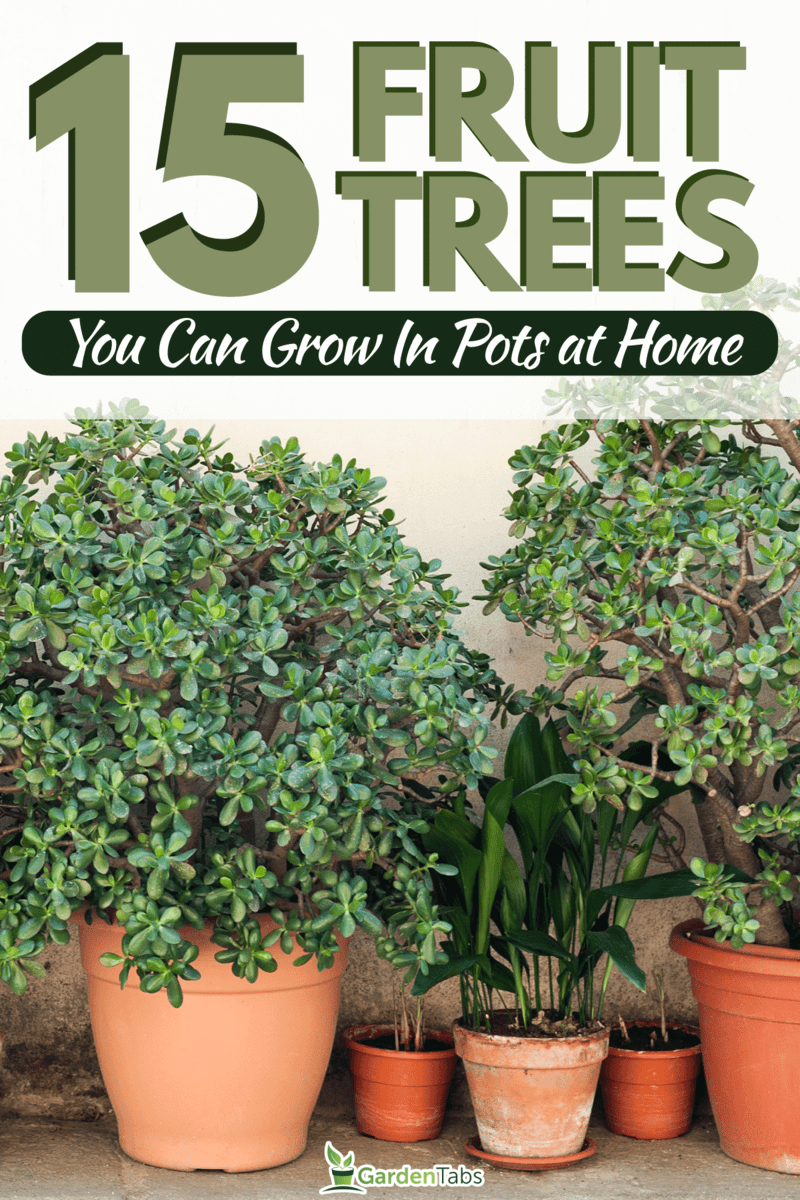
Best Fruit Trees for Containers
Let's take a look at some of the best fruit trees you can grow in containers. We'll look at specific varieties, but keep them sorted by type of fruit. Let's start with the forbidden fruit itself: apples.
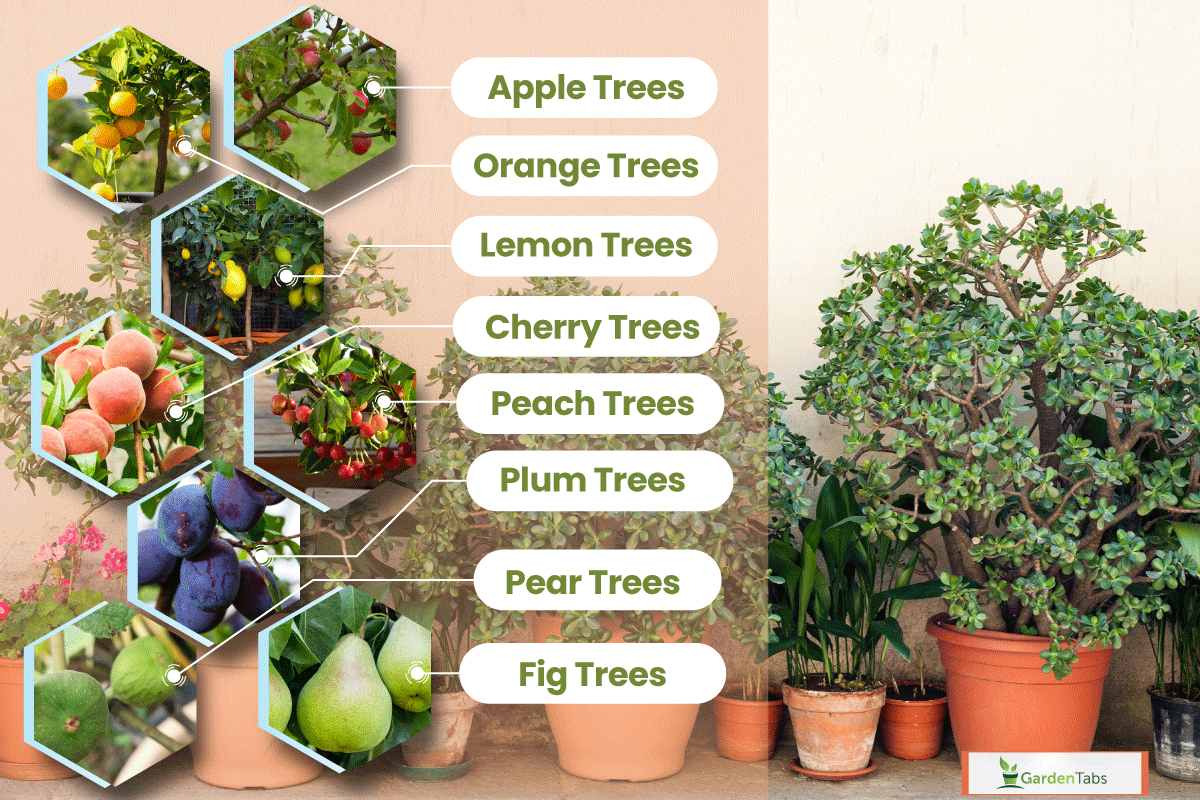
Apples
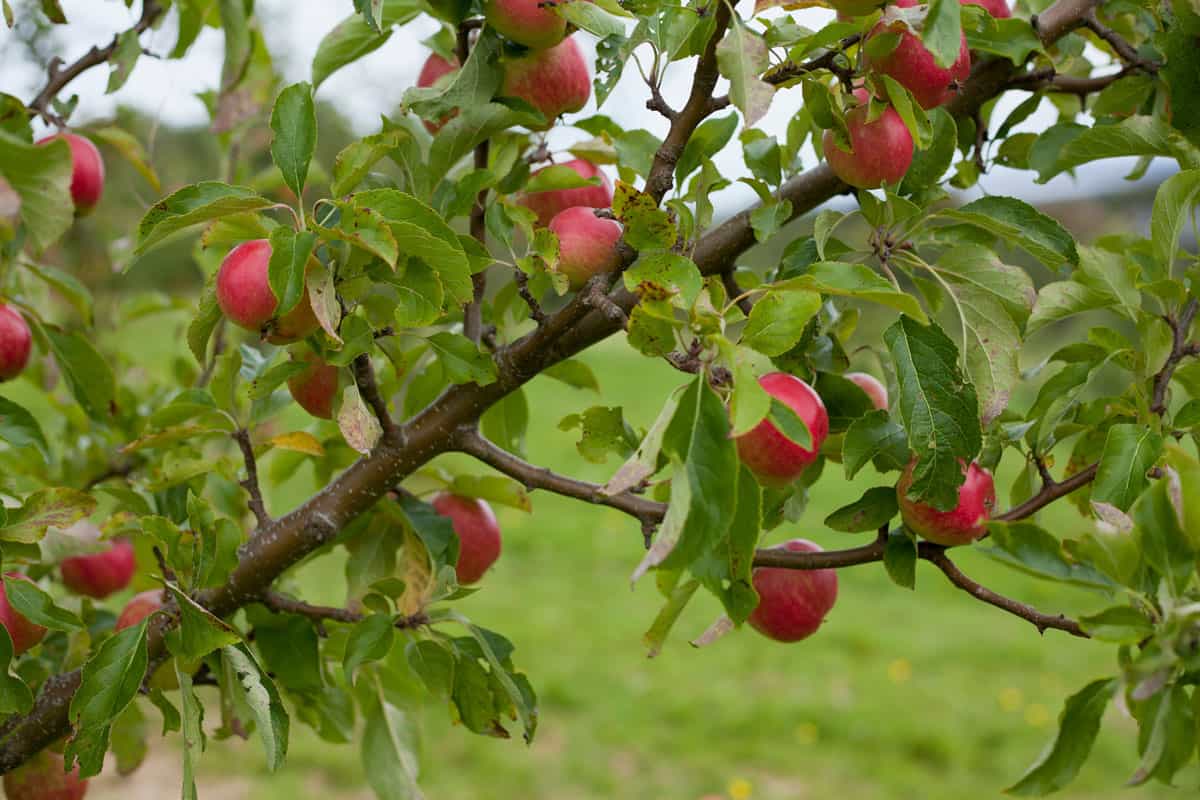
Americans consume more apples than any other fruit, and it's easy to see why. You can eat them fresh, turn them into juice or cider, or make scrumptious pies and fritters with them. On top of their culinary potential, their trees produce beautiful blossoms. All of this in concert makes apples a perfect pick for home growing.
When it comes to growing apples in containers, the variety of the fruit doesn't matter as much as the variety of the root. You see, the vast majority of apples feature branches grafted onto rootstock. The rootstock has more effect on how the tree grows, while the branches determine what variety of fruit they produce.
If you are growing apples in containers, look for ones with the M27 or M9 rootstock. These are two of the most popular dwarfing rootstocks, producing small trees that are ideal for containers. However, you should still go with the largest pot you can reasonably keep in your designated space.
Apple trees grown with either the M27 or the M9 rootstock will be weaker than non-dwarf varieties. Make sure you keep them staked, especially if growing them outdoors in the elements.
Now that we've got rootstocks out of the way, let's look at some popular fruit varieties you can find grafted to them.
1. Falstaff
Falstaff and Red Falstaff varieties are very popular for growing in containers. They produce crisp fruit with a nice balance of sweetness and acidity. They are also self-pollinating, meaning that you'll still get fruit from these trees even if you only have one.
2. Fiesta
When most people hear the word "apple," the fruit they picture often resembles the bright-red Fiesta apple. Not only are these apples nice to look at, but they offer a crisp bite too. They are great both for snacking and for cooking.
These apples are self-pollinating, although not as reliably as the Falstaff variety. You will get a bigger harvest if you keep two or more Fiesta trees together.
3. Granny Smith
Granny Smith green apples are the go-to for many home cooks when it comes to making apple pie. The texture and tartness also make them a great addition to salads. For gardeners with limited space, you'll also be happy to find out that their blossoms are self-pollinating, so a single tree can still yield fruit for your next culinary inspiration.
Oranges
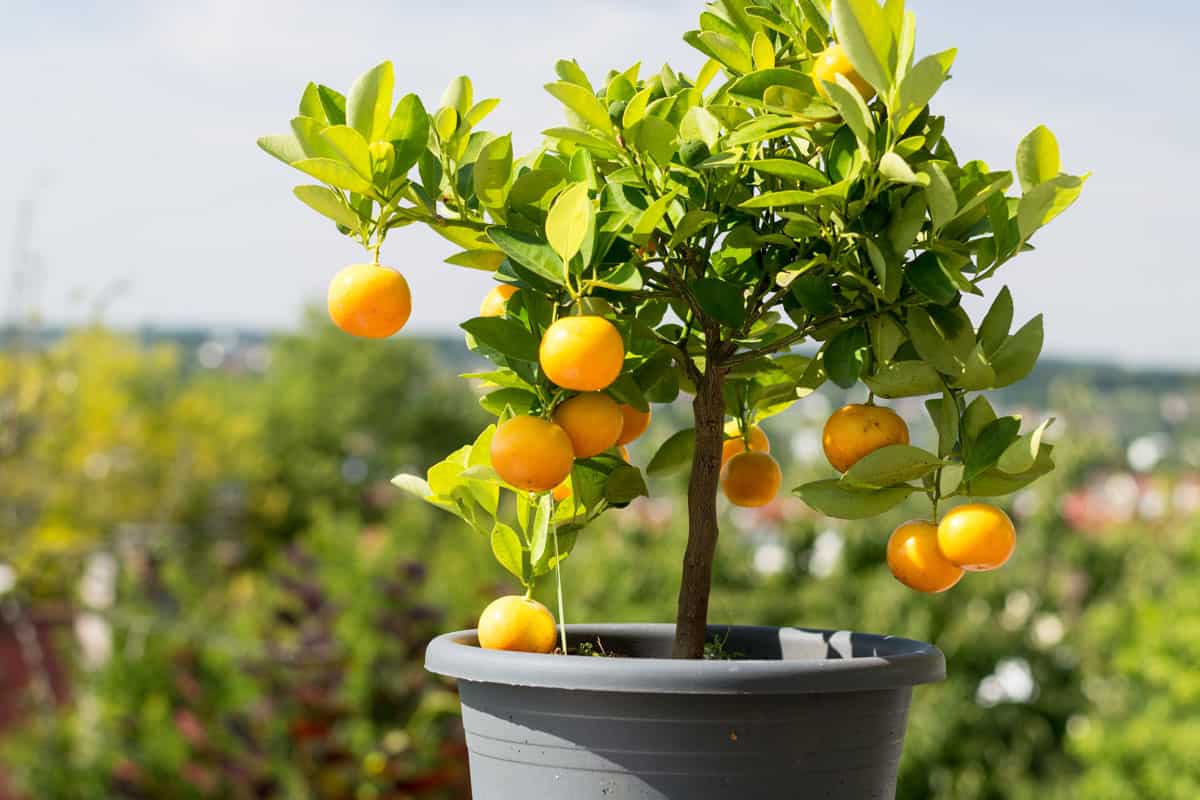
Oranges are another popular fruit with a variety of uses. Some can be eaten fresh or juiced, and they can also be used to make marmalades and sweets.
These tropical trees prefer warmer climates, but, when grown in containers, can be brought inside to protect from the cold.
Let's look at a couple of great varieties for container growing!
4. Dwarf Navel
Dwarf Navel oranges, also known as Dwarf Washington Navel oranges, are what they sound like: a smaller version of the classic navel orange. Their sweetness makes them an appealing snack, as does the fact that this variety is seedless.
They are cold-hardy for zones 8 - 11 when grown outside, but you can extend that range all the way to zone 4 if you move it indoors to protect it from the cold.
5. Dwarf Valencia
Another dwarf variety of orange, Dwarf Valencia has a tarter flavor than the navel orange. They are more often used for juicing or making marmalade or desserts, although they can be enjoyed on their own for those who like a sour tang.
Lemons

6. Dwarf Meyer
This dwarf version of the full-size Meyer lemon has similar fruit. It only grows to be 4 to 6 feet tall when kept in a container.
It is a self-fertile tree, so you'll only need one! Just remember to bring it indoors when the weather gets cold if you live outside of zones 9 - 10.
7. Dwarf Lisbon
The Dwarf Lisbon variety is also self-pollinating, which is great for those with limited space. The zest and the juice are fragrant, though with all citrus the fruits won't reach peak flavor for the first couple of years.
Hardy in US zones 9 - 11, growing this plant in a pot can help you protect it from winter chills.
Cherries
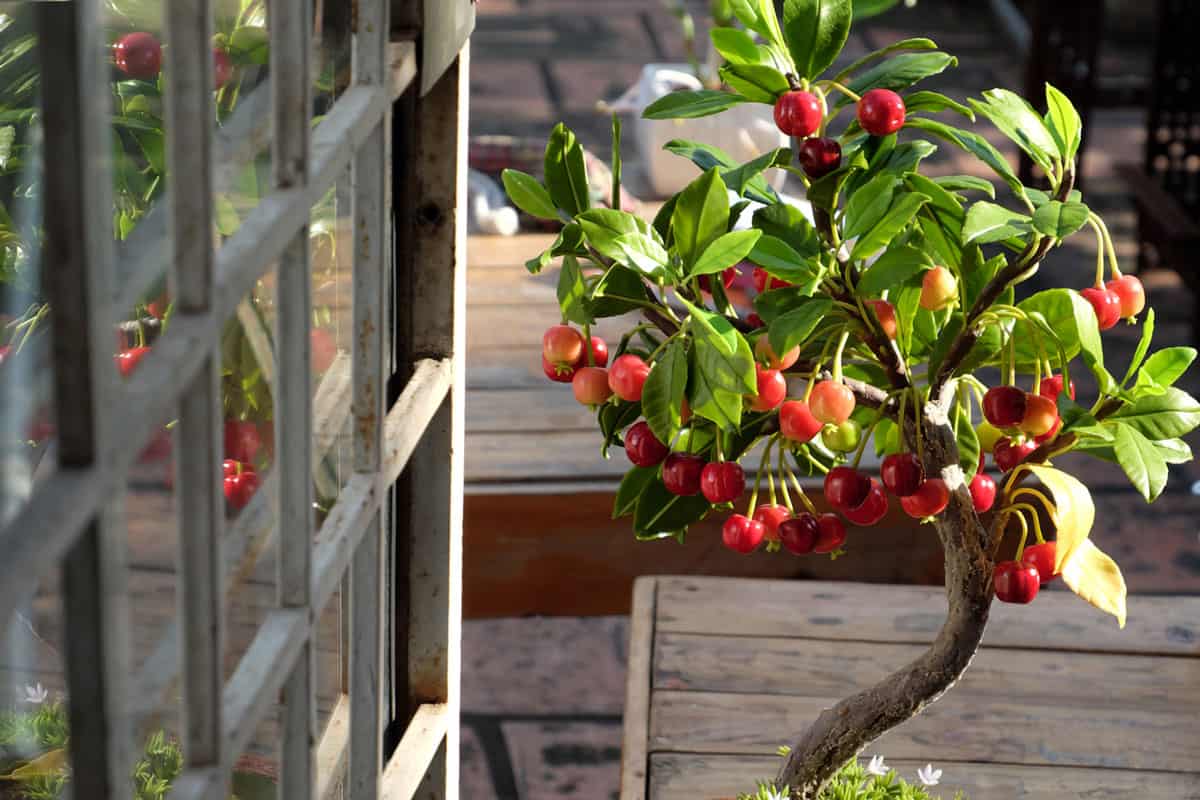
8. Stella
Stella cherry trees produce sweet and juicy cherries that are great for snacking. You'll also love the beautiful white flowers they produce.
These trees don't require pruning to encourage fruiting and are self-fertile. They are hardy in US zones 5 - 9.
9. Dwarf Bing
Bing cherries are prized for their large size and ruby-red color. The Dwarf Bing cultivar is well-suited for growing in containers at home.
The Dwarf Bing is another self-fertile fruiting tree. It is hardy in US zones 5 - 8.
10. Morello
Unlike Bing or Stella cherries, Morello cherries are more tart than sweet. Their flavor is generally too sour for snacking, but it is great for making preserves or candying, their most common use.
Morello cherries are self-pollinating and hardy in zones 4 - 9.
Peaches
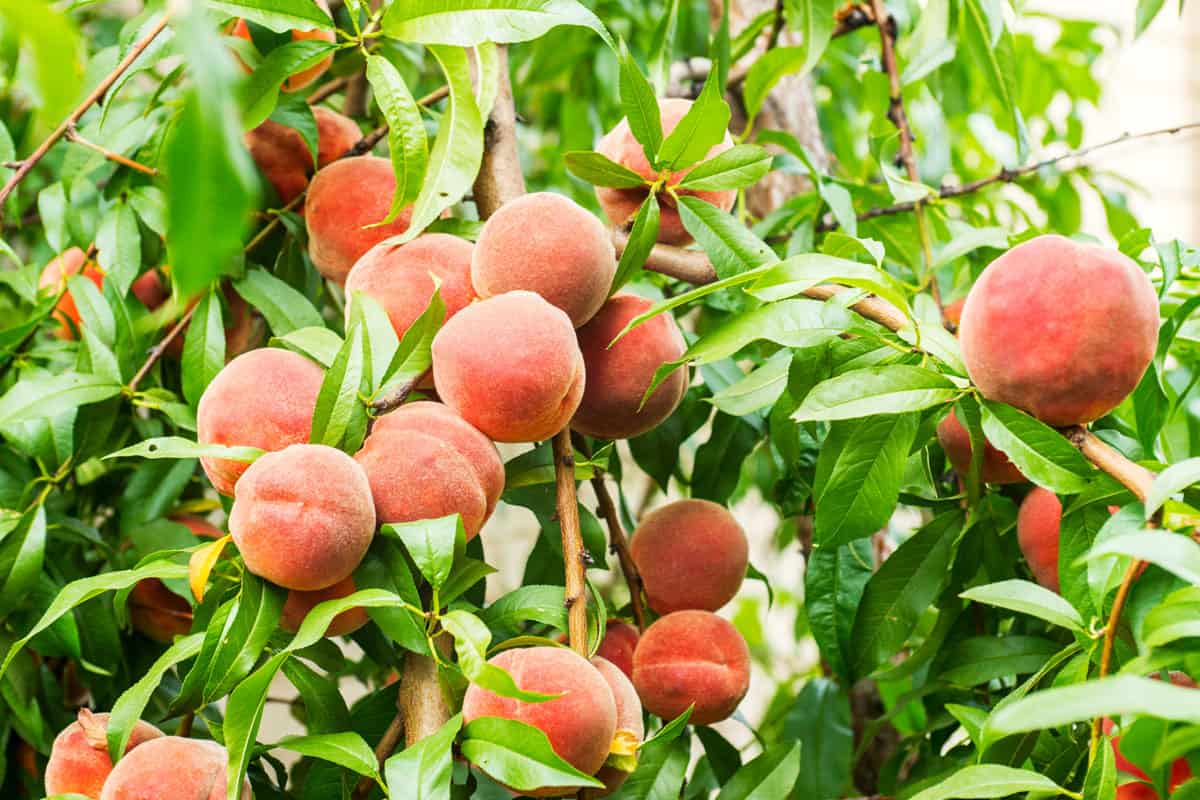
11. Southern Rose
Southern Rose peach trees grow smaller and start producing their medium-sized fruit earlier than many other peach varieties. This makes them a great option for container growing.
This variety, like other peach varieties, is self-fertile, so a single tree can bring you fruit. Like other peach trees, it also likes moderate weather, doing best in zones 5 - 8.
12. Nectar Babe
If you couldn't tell by the names, this is a variety of nectarines, which are essentially fuzz-less peaches. Nectar Babe is a dwarf variety, growing a small tree that works well for containers.
The fruit is smooth, with beautiful red skin and golden flesh. It is juicy, sweet, and rich. Everything you could want from a nectarine! It is self-pollinating and hardy for US zones 5 - 9.
Plums
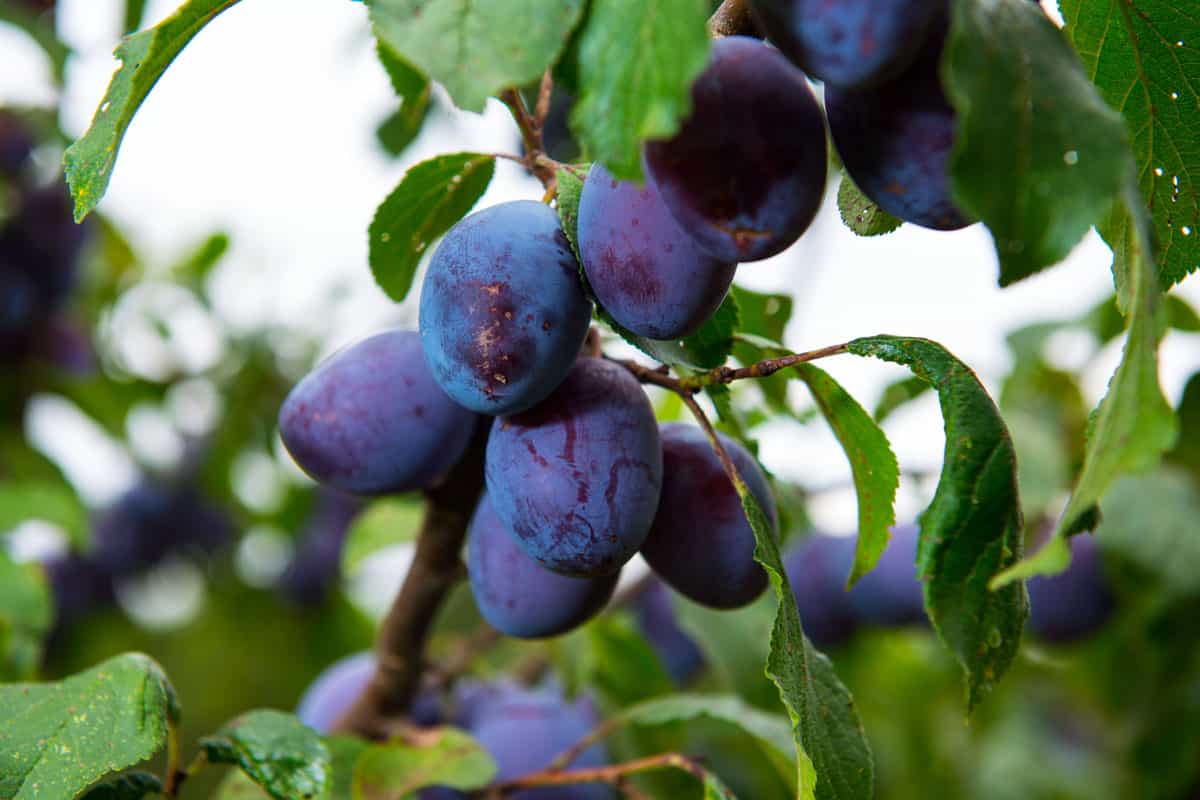
13. Damson
While some people think of damsons as a different fruit from plums, they are technically just a different variety than what most of us grew up with. Damsons do tend to be a bit more sour and spicy than most supermarket plums. Because of this, many prefer damsons for making preserves than casual snacking.
Damsons don't do well in hot summers, favoring zones 5 - 7. Those with smaller growing spaces will appreciate that damson trees are self-pollinating.
Pears
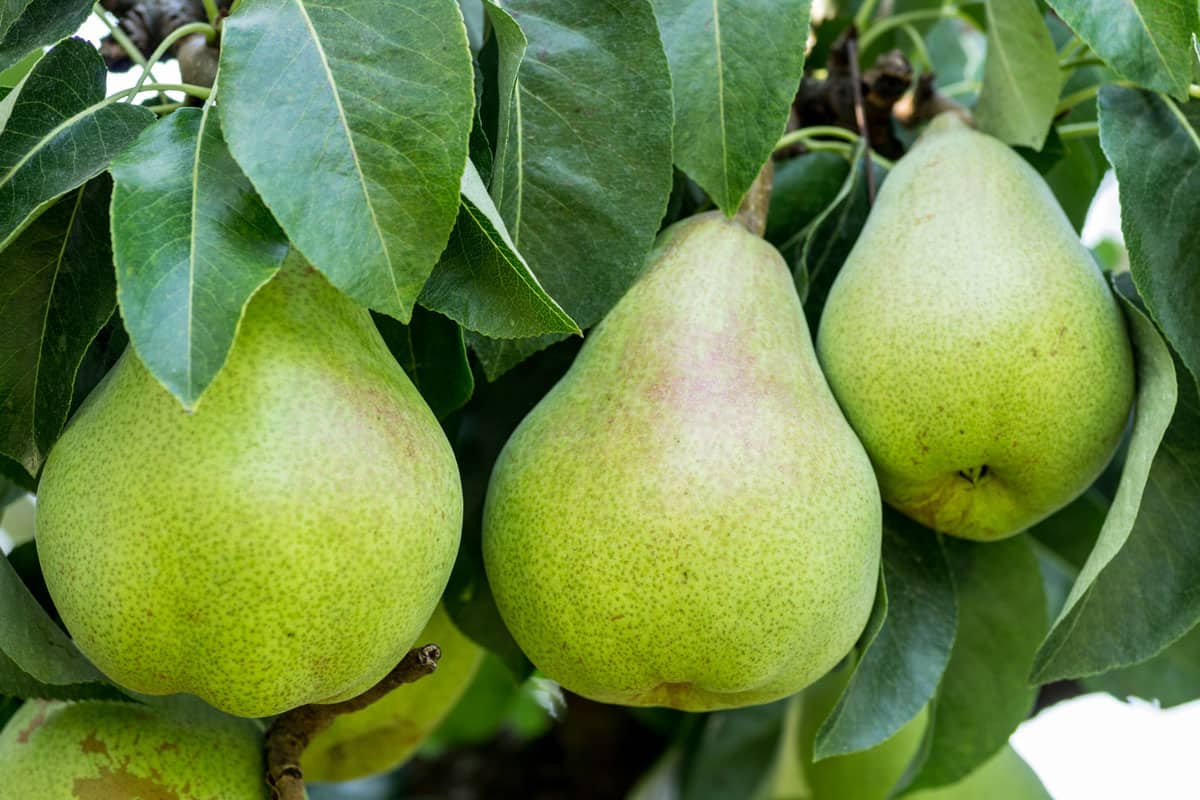
14. Bartlett
Bartlett pears conform more than any other variety to the iconic pear shape. Of course, looks aren't everything. They also have a great pear aroma and flavor.
Bartlett pears are partially self-pollinating. If you only want a small harvest, a single tree will suffice. Investing in a second tree, though, can really add to your bounty.
Like damsons, Dwarf Bartlett trees are hardy in zones 5 - 7.
Figs
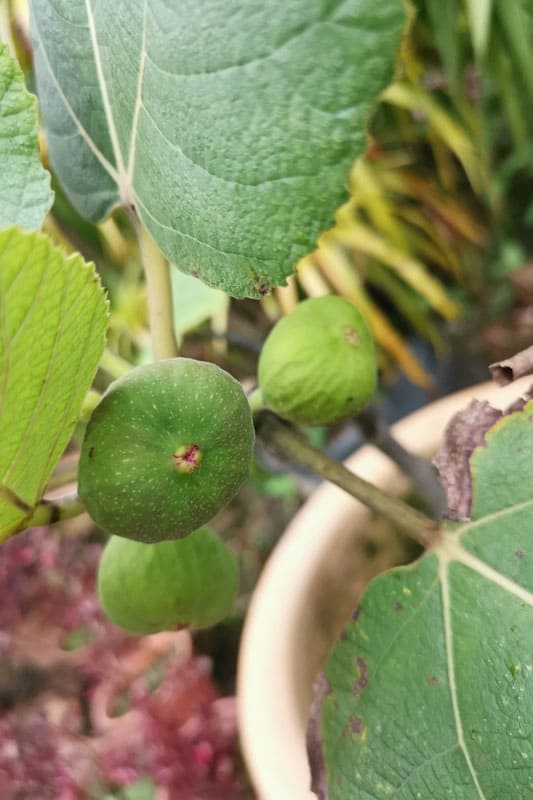
15. Chicago Hardy
Chicago Hardy figs are smaller than other varieties. This variety is also known as "Bensonhurst Purple," and, though small, the fruits it produces are sweet and rich.
As you may expect, this cultivar gets its name from its hardiness. In fact, it handles the cold better than just about any other variety of fig! It does well in zones 5 - 7, although it should be brought inside during cold winters when grown in a container.
Tips For Growing Fruit Trees in Pots
While growing your fruit tree in a pot can be more convenient in some ways, it also requires a bit more care and work than growing trees out in the ground.
For most fruit trees, you'll want to pot them in spring. This will help the roots develop faster. That being said, planting in pots is more forgiving than planting in the ground if you want to pot them during another season.
You'll also want to repot your fruit trees every year or two. This can be done after their leaves have fallen.
Most fruit trees will do best in a larger pot, but different varieties have different needs. Be sure to research the specific variety you grow. If you buy from a trusted nursery, they should be able to give you a lot of useful information.
Most fruit trees enjoy having full sun. Try to position your pots so they get at least six hours of sun a day. This will keep your trees happy and net you a bigger harvest.
What Are The Easiest Fruit Trees To Grow?
Many of the trees we've listed are among the easiest to grow. Pear trees, in particular, have a reputation for easy gardening. The varieties of apples, plums, figs, and cherries we've covered are also great candidates for easy growing.
Peach trees are also fairly easy to grow, as long as you can provide them with plenty of sun but not too much intense heat.
Citrus trees, like the lemon and orange trees we've covered, can be trickier. They are especially sun-loving, in particular lemons. Lemons do best with 8 hours of sun or more, although they will still produce with 6 hours of sunlight.
Final Thoughts
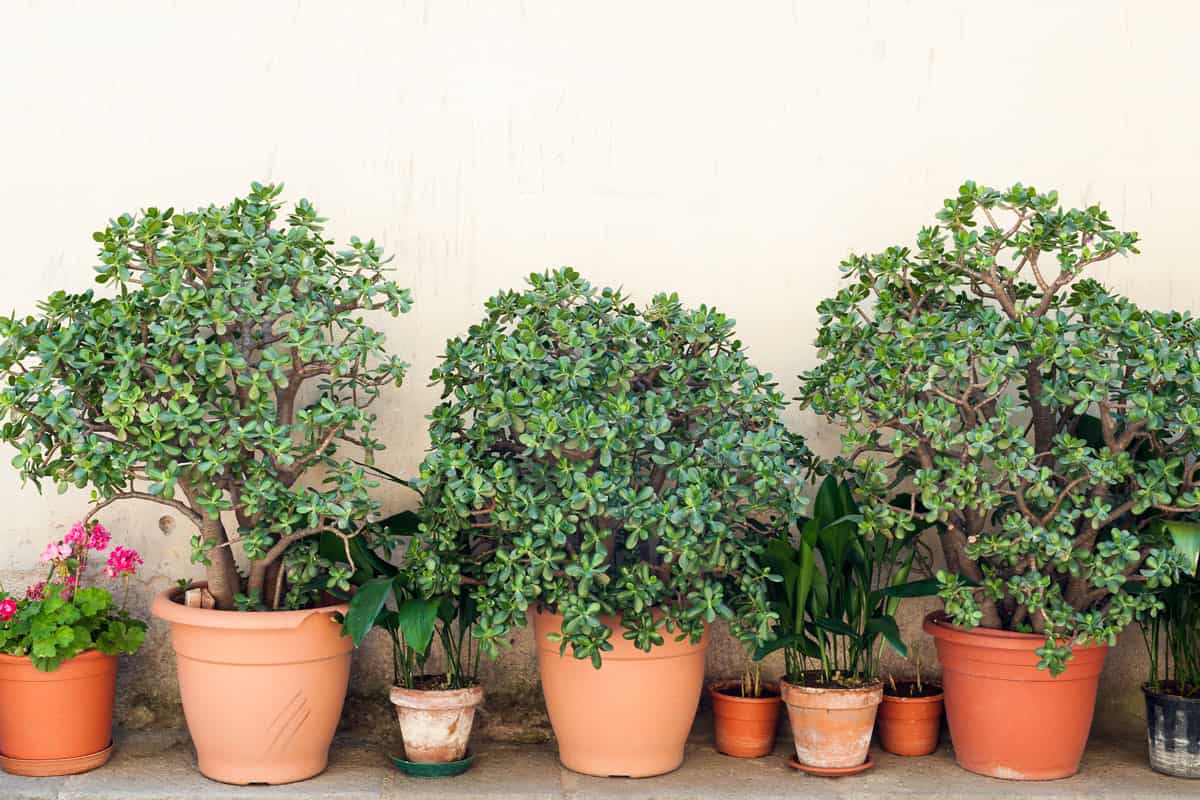
Growing fruit trees at home is fun and functional. Growing them in a container gives you more options in terms of space and climate, too!
Now you know more about many of the best varieties of fruit trees for growing in a pot. This list is far from comprehensive, but should give you a great place to start!
If you found this article helpful, be sure to check out these interesting and informative posts:
